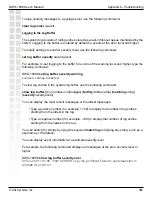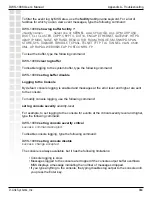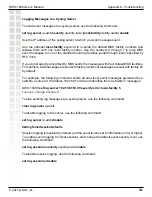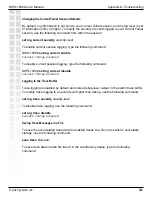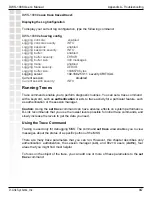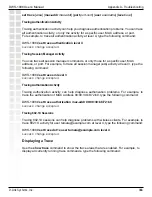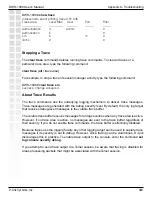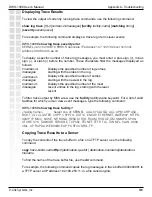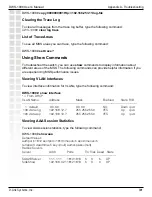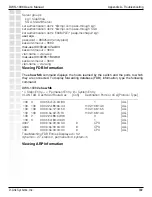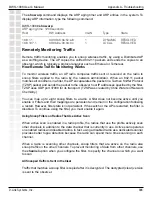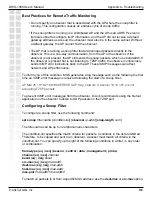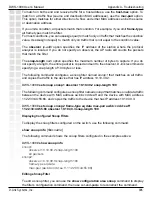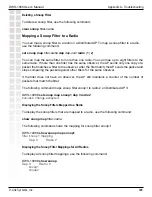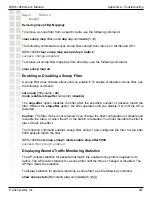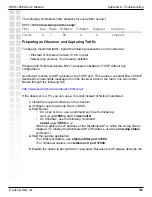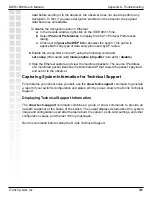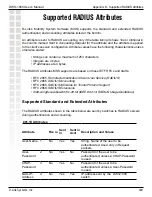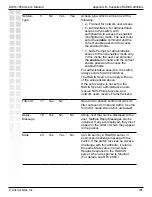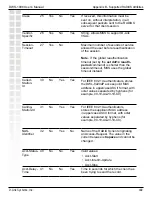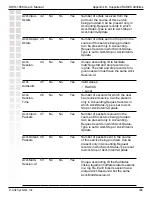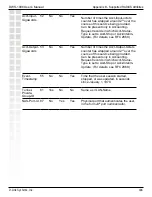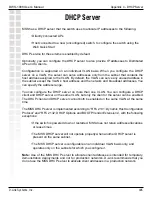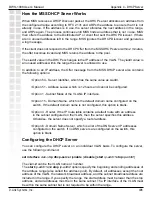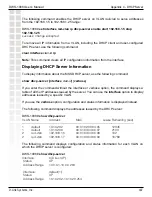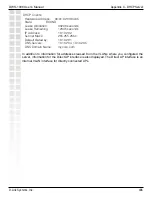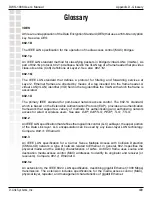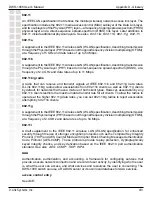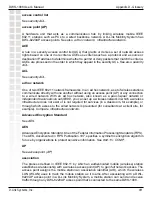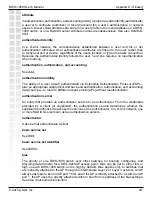
397
DWS-1008 User’s Manual
D-Link Systems, Inc.
Appendix A - Troubleshooting
Dap: 2 Radio: 2
snoop2
Removing Snoop Filter Mappings
To remove a snoop filter from a specific radio, use the following command:
clear
snoop
map
filter-name
dap
dap-num
radio
{
1
|
2
}
The following command removes snoop filter
snoop2
from radio 2 on Distributed AP 3:
DWS-1008#
clear snoop map snoop2 dap 3 radio 2
success: change accepted.
To remove all snoop filter mappings from all radios, use the following command:
clear
snoop
map
all
Enabling or Disabling a Snoop Filter
A snoop filter does not take effect until you enable it. To enable or disable a snoop filter, use
the following command:
set
snoop
{
filter-name
|
all
}
mode
{
enable
[
stop-after
num-pkts
] |
disable
}
The
stop-after
option disables the filter after the specified number of packets match the
filter. Without the
stop-after
option, the filter operates until you disable it or until the AP is
restarted.
Caution:
The filter mode is not retained if you change the filter configuration or disable and
reenable the radio, or when the AP or the switch is restarted. You must reenable the filter to
place it back into effect.
The following command enables snoop filter
snoop1
, and configures the filter to stop after
5000 packets match the filter:
DWS-1008#
set snoop snoop1 mode enable stop-after 5000
success: filter ‘snoop1’ enabled
Displaying Remote Traffic Monitoring Statistics
The AP collects statistics for packets that match the enabled snoop filters mapped to its
radios. The AP retains statistics for a snoop filter until the filter is changed or disabled. The
AP then clears the statistics.
To display statistics for packets matching a snoop filter, use the following command:
show
snoop
stats
[
filter-name
[
dap-num
[
radio
{
1
|
2
}]]]
Summary of Contents for DWS-1008
Page 1: ......

